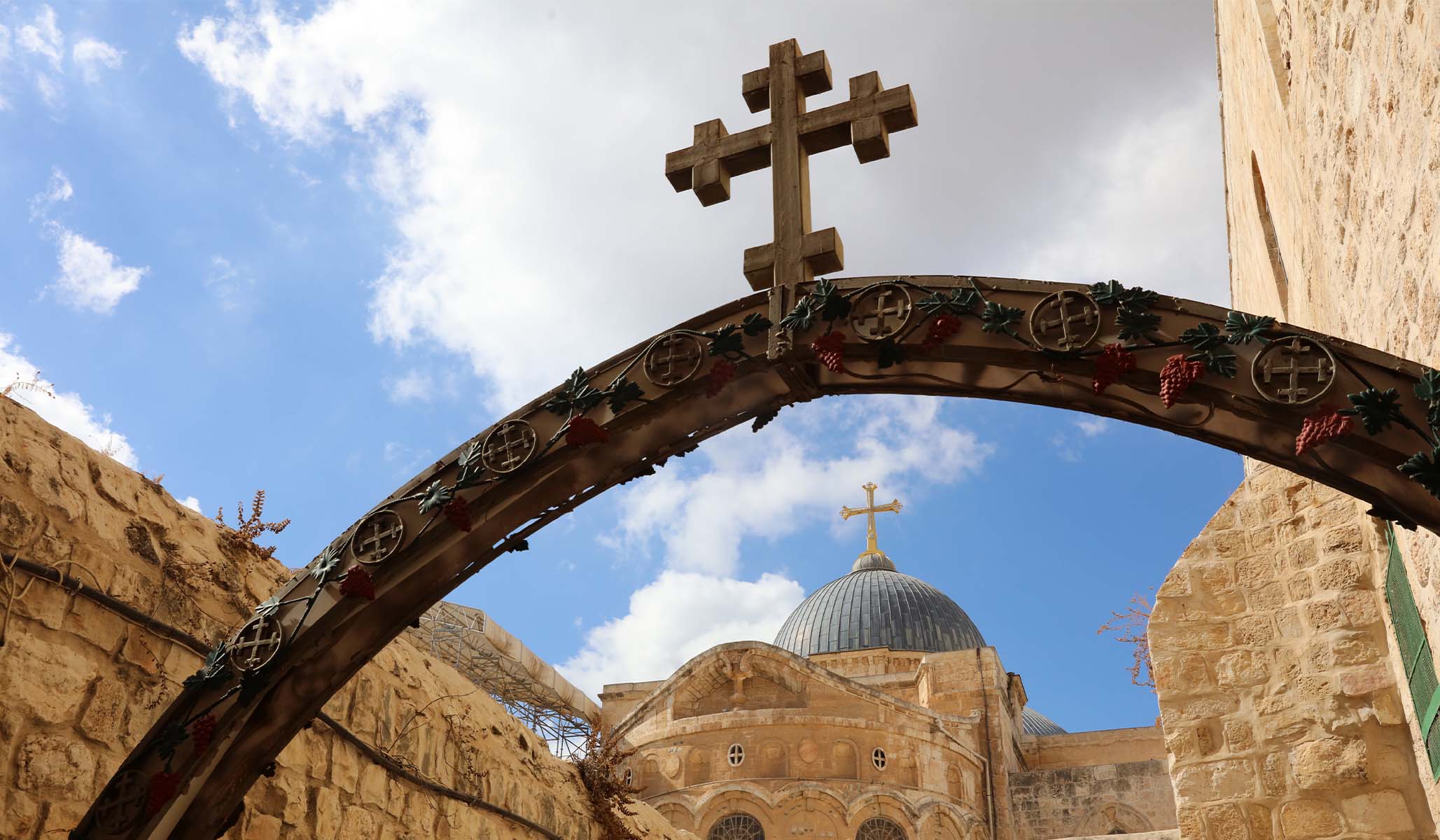


NRPLUS MEMBER ARTICLE T he events Christians celebrate today took place in and around Jerusalem. Nazareth, where Jesus grew up, is in the northern part of Israel. His early miracles and teachings took place around the Sea of Galilee, also in the north. From that area south to Jerusalem is about a two-hour drive today, but walking it in the first century was a lengthy ordeal.
After telling the story of Jesus’s birth and the beginning of His public ministry, Luke narrates the bulk of his Gospel as a slow progression to the holy city. Luke 9:51 says that “Jesus resolutely set out for Jerusalem,” and the reader follows that journey through the rest of the book, concluding in chapter 24.
Jesus stopped in towns and villages along the way, teaching, healing, and calling for repentance. He did so resolutely, as Luke said, and intentionally, sending His disciples ahead of Him to each village with specific instructions to prepare for His arrival.
People began to notice. What began with twelve disciples added 72 others in Luke chapter ten, and then crowds began forming.
Luke consistently reminds the reader of this fact. Luke 11:29 says that “the crowds increased.” Luke 12:1 says that “a crowd of many thousands had gathered.” Luke 14:25 says that “large crowds were traveling with Jesus.”
Those crowds heard some of Jesus’s most famous parables, such as the parable of the good Samaritan. He drove out demons and cured people with various diseases. He rebuked the religious leaders and taught His disciples how to pray.
Luke also periodically reminds the reader of the destination. Luke 13:22 says, “Then Jesus went through the towns and villages, teaching as he made his way to Jerusalem.” Luke 17:11 begins, “Now on his way to Jerusalem.” Why Jerusalem? Jesus tells His disciples in Luke 18:31-33:
We are going to Jerusalem, and everything that is written about the Son of Man will be fulfilled. He will be delivered over to the Gentiles. They will mock him, insult him and spit on him; they will flog him and kill him. On the third day he will rise again.
In a word, Easter. That’s why they were going to Jerusalem.
When Jesus makes it to Jerusalem, the crowd celebrates His arrival on the back of a donkey. That was a week ago, Palm Sunday. Coming in over the Mount of Olives, Jesus would have been able to see the city sprawled below Him. The anticipation of that moment after the long, tiring journey of teaching and ministry, combined with the knowledge of what was going to happen to Him only a few days later, explains Jesus’s tears as He speaks to Jerusalem in Luke 19:42: “If you, even you, had only known on this day what would bring you peace — but now it is hidden from your eyes.”
On Thursday, the Last Supper and the arrest. On Friday, the sham trial, beatings, Crucifixion, and burial. But on Sunday, the third day after His death, the Resurrection, just as Jesus had promised.
That’s what Christians celebrate today, but Luke doesn’t end the story there. His Gospel concludes in chapter 24 with Jesus’s ascension. Jesus had to go to Jerusalem first, but heaven was the ultimate destination. Luke 9:51, the verse mentioned earlier that says Jesus resolutely set out for Jerusalem, gives that, not the Resurrection, as the reason for His trip. The full verse says, “As the time approached for him to be taken up to heaven, Jesus resolutely set out for Jerusalem.”
Even back at the start of the walk to Jerusalem, Jesus’s purpose was to open the doors of heaven. But the journey began long before that. Jesus explained it to His disciples in Luke 24:25-27:
He said to them, “How foolish you are, and how slow to believe all that the prophets have spoken! Did not the Messiah have to suffer these things and then enter his glory?” And beginning with Moses and all the Prophets, he explained to them what was said in all the Scriptures concerning himself.
Easter wasn’t only the culmination of a long walk to Jerusalem. It was the fulfillment of God’s plan from before the beginning of time. That plan was to make salvation available to all, through the death, burial, and Resurrection of the Son, who now sits at the right hand of the Father. He is there in heaven, having prepared a place for you and made a way for you to get there, if only you will repent and believe in His finished work.
And so we, too, as Christians today, are on a journey to Jerusalem. Robert Lowry knew that when he took a poem of Isaac Watts’s and added his own refrain to create the hymn “We’re Marching to Zion.” “Zion” is a poetic name for Jerusalem, but in this case, it doesn’t refer to the city we can visit today, but rather the New Jerusalem, the heaven promised in Revelation chapter 21.
“We’re marching through Immanuel’s ground, to fairer worlds on high,” the hymn says. There, God will live with His people, and “there will be no more death or mourning or crying or pain, for the old order of things has passed away,” Revelation 21:4 says. Just as the crowds joined Jesus on His physical walk to Jerusalem, so we are charged with following Him on a spiritual walk to the New Jerusalem. That’s only possible through Easter, the victory over death, the empty tomb by way of the cross.
